The ZV-E1 is the latest addition in the ZV line-up, the series of cameras Sony is designing specifically for content creators, V-loggers, YouTubers… in other words the wave of new video-makers who focus on solo filming and social media.
There are a lot of differences between these two products, despite looking similar on the outside. Have a look at the similarities below, then make sure to read the rest of the article, because they are not on the same level.
What the ZV-E1 and ZV-E10 have in common:
- Body design, including the tally light at the front
- 3.0-in multi-angle LCD screen with touch sensitivity
- Built-in microphone with 3 capsules (+ wind shield included)
- Digital audio recording via the Multi Interface shoe (and compatible microphones)
- 3.5mm microphone input / headphone output
- Micro HDMI port
- USB streaming (no plugin/software required)
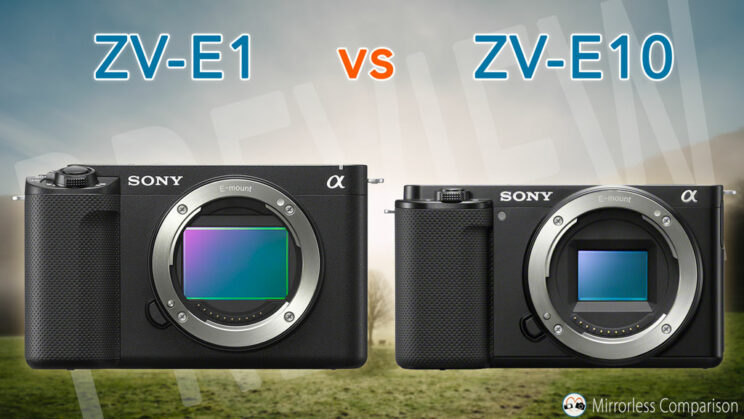
Ethics statement: the following is based on official information and third party reviews, when mentioned. We were not asked to write anything about this product, nor were we provided any compensation of any kind. Within the article, there are affiliate links. If you buy something after clicking one of these links, we will receive a small commission. To know more about our ethics, you can visit our full disclosure page. Thank you!
1. Sensor and Format
There are a lot of differences in this first chapter already. First, the ZV-E1 has a larger sensor (full frame) than the one found on the ZV-E10 (APS-C), so the E1 model will deliver better dynamic range and high ISO performance. The crop factor is 1.5x, which means that, for example, a 35mm lens mounted on the APS-C camera will give approximately you the same field of view as a 50mm lens.
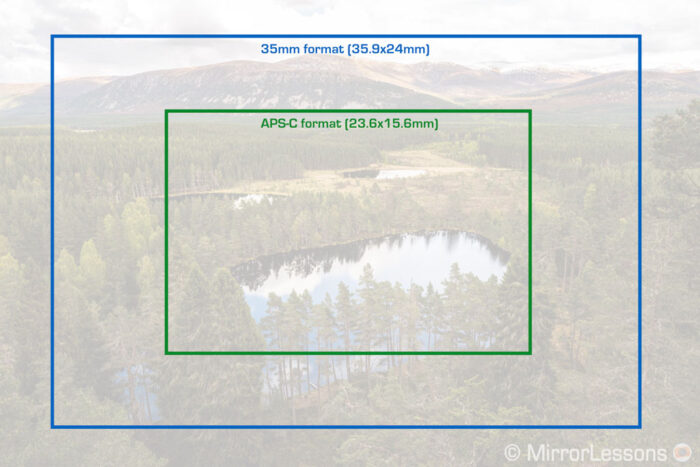
The resolution is also different, with the ZV-E1 outputting 12.1MP, whereas the ZV-E10 has double the amount with 24.2MP.
The larger sensor and low megapixel count allow the E1 to have a vaster ISO range, as you can see below.
ISO
Normal range
Extended range
ZV-E1
80 – 102,400
40 – 409,600
ZV-E10
100 – 32,000
50 – 51,200
The ZV-E1 also has a faster image processor, as well as a separate chip for Deep Learning technology (Subject Detection), which I’ll talk about a bit more further down.
2. Movie Recording
The second chapter is no less rich in differences between these two cameras. Here as well, the ZV-E1 has the edge. It can:
- record 4K up to 60p with no sensor crop
- record 4K up to 120p with a 1.1x crop (software update required, ETA June 2023)
- record 1080 up to 240p (software update required, ETA June 2023)
- record 10-bit 4:2:2 internally
- record up to 600Mbps (ALL-Intra codec)
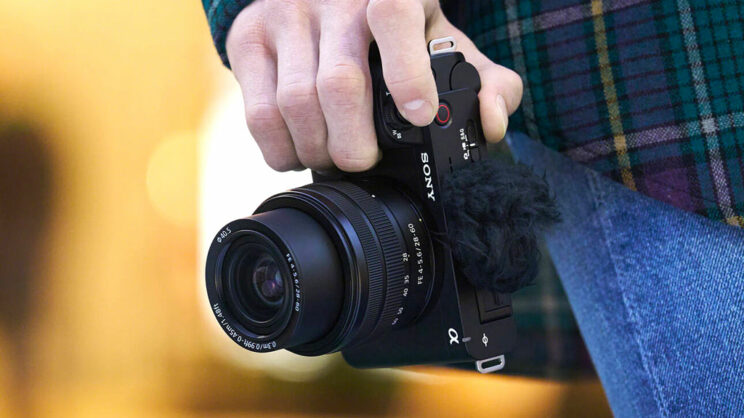
The ZV-E10 can record 4K up to 30p, and Full HD up to 120p. Internal recording is limited to 8-bit 4:2:0.
Both cameras feature the Picture Profiles, with settings such as S-Log2 and S-Log3. S-Cinetone is only available on the E1 model however.
The full frame camera also gets the Creative Look, Sony’s new picture profiles that are designed for stills and video, whereas the E10 uses the older Creative Style set.
Neither has a recording limitation per clip, although how long they can continue without stopping will depend on battery life, card capacity and, of course, the ambient temperature.
3. Image Stabilisation
The ZV-E1 features 5-axis image stabilisation, with a rating of 5 stops of compensation.
The ZV-E10 lacks in-body stabilisation. For video, it has the Active mode, which is electronic stabilisation (1.1x crop).
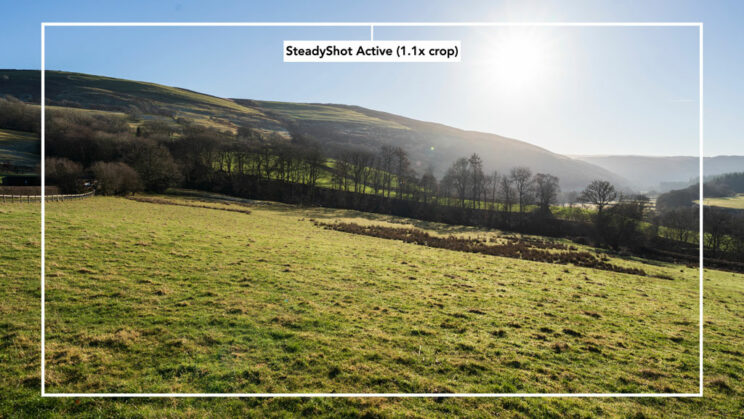
The full frame model also has the Active mode, and the new Dynamic Active which crops the sensor further to improve the result.
Another option for both is the Sony Catalyst software (desktop), which can read the gyro sensor data found in the video files to offer better stabilisation than what you get in camera.
4. Autofocus
Autofocus is another area where the ZV-E1 has an advantage. It inherits the latest software algorithms concerning subject detection. It can recognise the body, head, face and eyes of humans, as well as the body, head and eyes of animals. It can also detect insects and various vehicles such as planes and cars.
The performance found on the E1 model is powered by a dedicated processor that Sony calls AI processing unit.
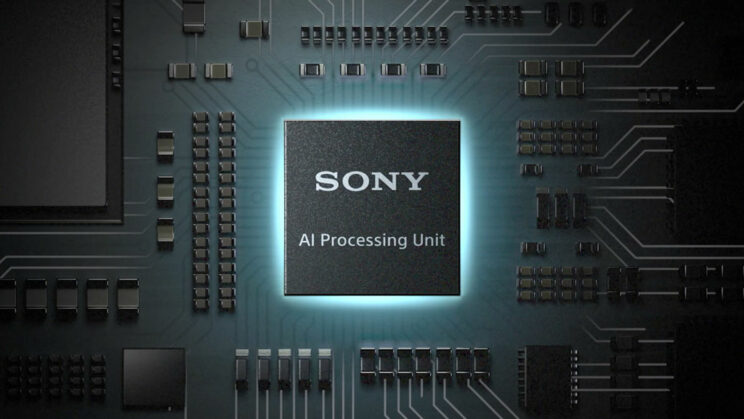
The ZV-E10 uses an older processor and software by comparison. It can detect the eyes and face of humans, as well as various animals, but not birds or vehicles. The understanding of human poses is also more limited.
Another advantage of the full frame camera is low light performance, thanks to a rating of -6EV versus -3EV on the E10 model.
Finally, the E1 uses more phase detection points: 759 versus 425 on the APS-C camera.
5. Shutter
The two cameras are designed for video first, but Sony went a step further with the ZV-E1 by removing the mechanical curtains, which means only the electronic shutter can be used to take photos. The E10 has both the mechanical and electronic modes.
The full frame camera has a faster maximum shutter speed of 1/8000s, whereas the ZV-E10 stops at 1/4000s. With flash however, the E1 can’t sync faster than 1/30s because of the lack of a mechanical shutter, whereas the APS-C model goes up to 1/160s.
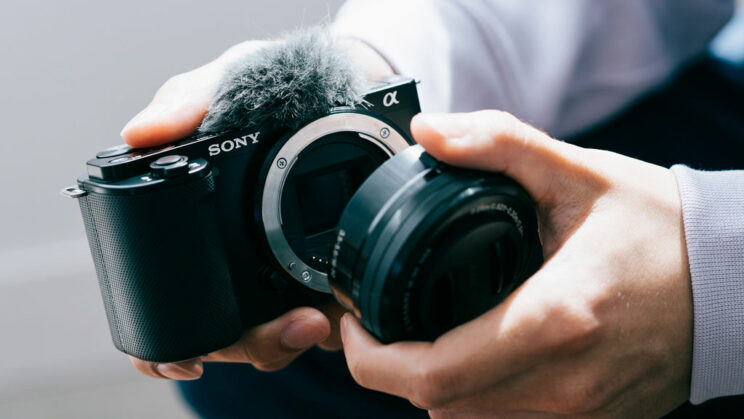
6. Continuous Shooting and Buffer
Ok, it’s a very minor difference, but if you really want to know, the ZV-E10 can shoot up to 11fps, whereas the E1 model is 1fps slower (10fps!).
More interesting is the buffer rating. The full frame camera can work at full speed for longer, saving 1000+ JPG or Compressed RAW images. The E10 is much less capable, slowing down after capturing 99 JPG or 46 RAW files.
7. Size and Buttons
The two cameras have a very similar design that lacks a viewfinder but has a physical controls designed with video-making in mind.
With that said, there are a few differences, starting with the size. The ZV-E1 is a bit larger and heavier:
- ZV-E1: 121.0 x 71.9 x 54.3 mm, 483g
- ZV-E10: 115.2 x 64.2 x 44.8, 343g
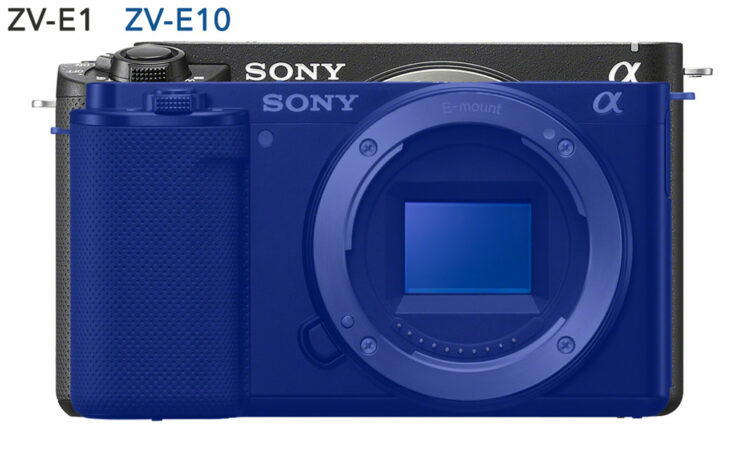
The button layout is somewhat different too: on top, the E1 has a switch to go from photo, video and S&Q mode, whereas the E10 has a button you press repetitively to cycle through the desired mode. The On/Off switch is found next to the shutter button on the full frame model, whereas the APS-C cameras has a separate switch.
On the rear, the E1 has an extra custom button, and the location of the MENU button is different.
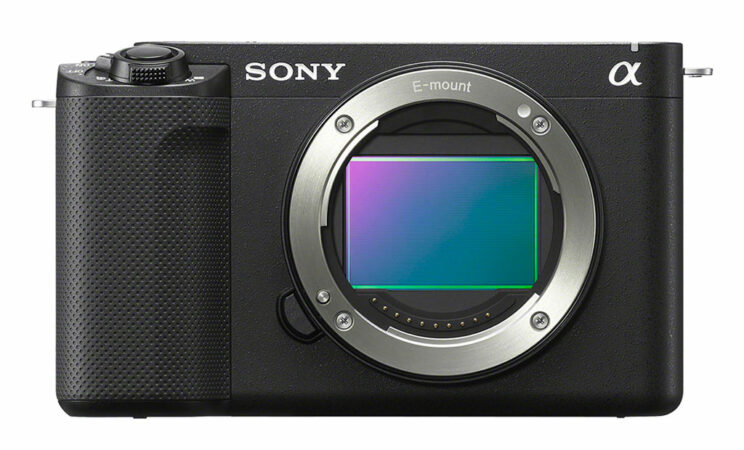
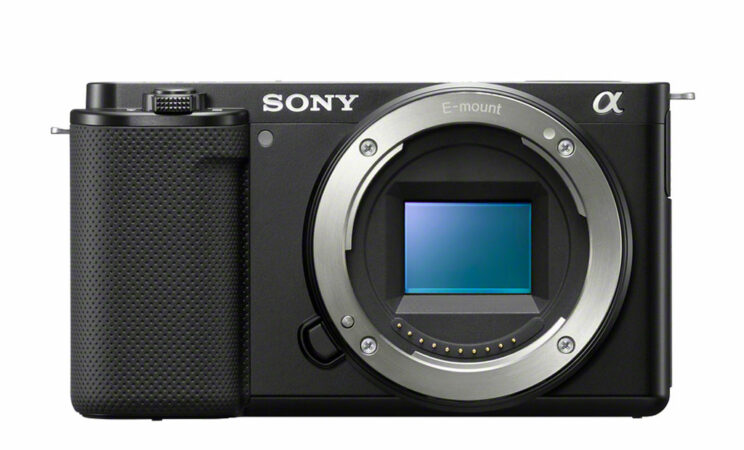
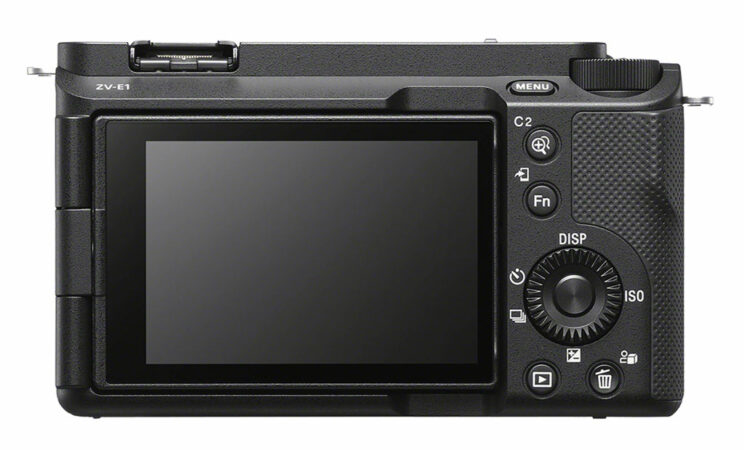
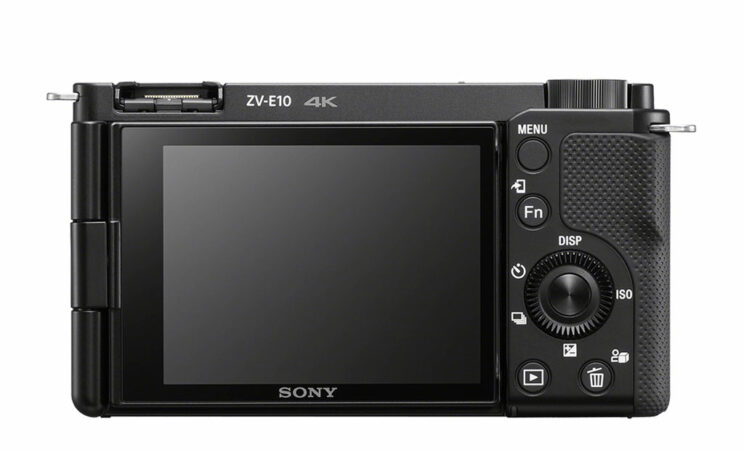

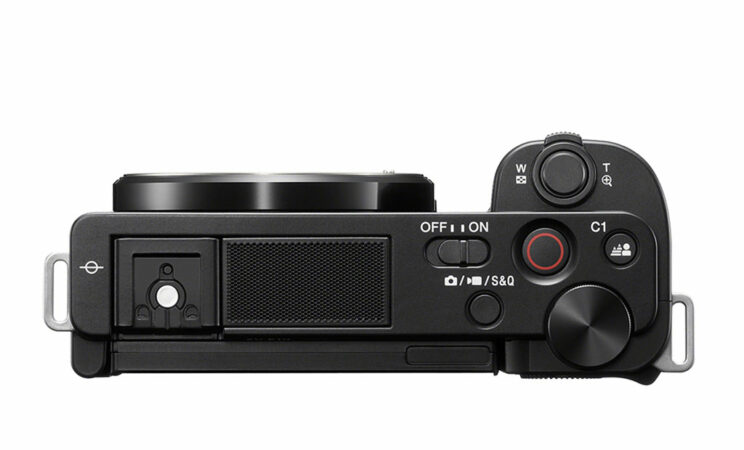
8. Extra Features
The ZV-E1 is the more recent model and, as expected, has extra functionalities. Some of them are built around the advanced subject recognition capabilities.
There is the Auto Framing mode, where the camera crops the sensor and keeps the subject at the centre even if he or she move. It can do the same thing when using digital stabilisation.

Other extra things include CineVlog, where it mimics the 2.35:1 widescreen aspect ratio by adding black bars at the top and bottom, as well as switching to the S-Cinetone profile to which you can easily add some looks and tones with the touch screen. The frame rate is 23.98p and can’t be changed.
Another nice thing is Breathing Compensation, which eliminates focus breathing with select Sony E-mount lenses.
Then we have a set of other functions both camera have, such as the possibility to open the aperture to the largest size with a press of a button (to get more background blur), and the Product Showcase mode where they change focus point when an object is moved to the front to highlight its characteristics.
9. Battery
Another great advantage of the ZV-E1 is the larger NP-FZ100 battery, which lasts longer than the older and smaller NP-FW50 shipped with the E10.
The official CIPA rating may not tell you much (570 shots for the E1, 440 shots for the E10) but in my experience, there is a significant difference in real world use between these two battery packs.
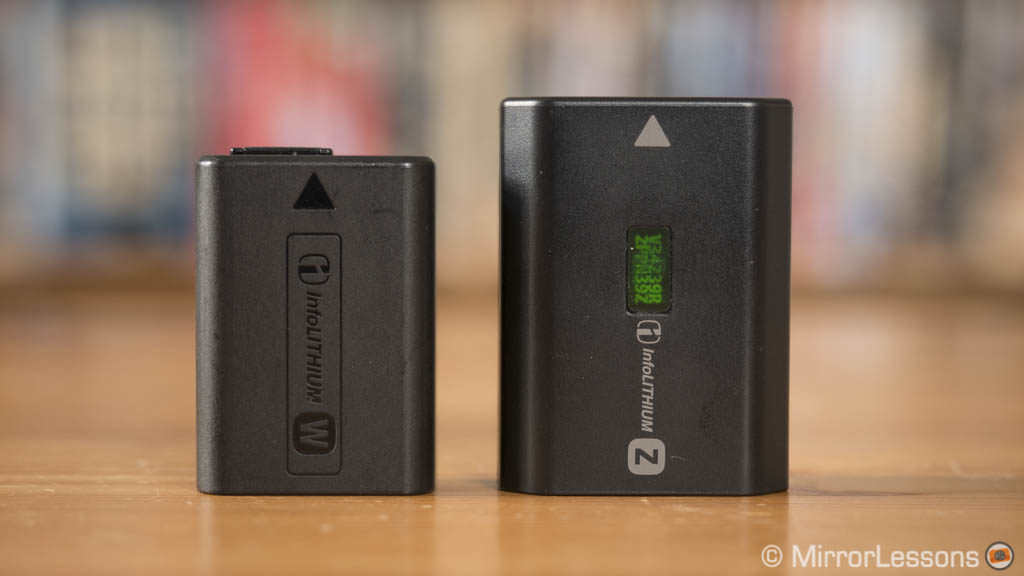
10. Price
If you’ve made it this far, you will have seen that the ZV-E1 is better in almost every way. For this reason, it is also much more expensive, starting at $2200 / £2350 / €2700.
The ZV-E10 aims at beginners who don’t have a large budget to start their video-making journey, and is available for much less: $700 / £570 / €630.
Conclusion
Their names are similar, they look the same and they have been designed for “content creators”, but otherwise the ZV-E1 and ZV-E10 are in two very different leagues.
The E1 has a larger sensor, superior video specs, the latest autofocus innovations, more features and in-body image stabilisation, but it costs much more.
The ZV-E10 fits the beginner profile much better from a budget point of view.
Check price of the Sony ZV-E1 on
B&H Photo
Check price of the Sony ZV-E10 on
Amazon UK | B&H Photo | eBay
